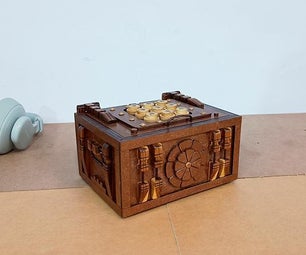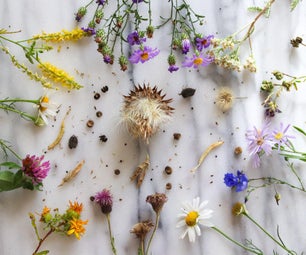Introduction: Easy, High Success Rate, Seed or Cutting Starter
Starting plants from seeds can have a variable success rate. This method increases your chances of getting viable plants to almost 100%, by preventing some of the common problems that cause seedlings to fail; inconsistent watering, and root shock.
If you start a lot of plants from seeds or cuttings, this is a great low maintenance way to start and replant seeds.
You can get self-watering pots at most garden centers starting at about $10. If you want to do it the DIY way, just put a diaper in the bottom of a regular pot, it will hold a lot of water. The potting soil and seeds will run $5-10. I had everything on hand so my cost was $0.
Step 1: Step 1: Self-watering Pot
Use potting soil to fill a self-watering pot about a third of the way up. Self-watering pots are great for starting plants because you don’t have to constantly monitor the moisture level. You’ll get a lot more successful plants this way.
Step 2: Step 2: Root Protection Tubes
Take toilet paper rolls and push in the bottom ends so the center is closed and you have a tube with a 2-pointed bottom. These will act as plantable pots so you don’t disturb the roots when you replant later.
Step 3: Step 3: Fill the Tubes
Use your tubes to scoop up potting soil and put them in the pot so they stand upright.
Step 4: Step 4: Plant
Plant either seeds, or in this case seedlings, in each tube.
Step 5: Step 5: Fill the Pot With Soil
Fill soil in around the tubes, you will be able to shift them around so there is space between them, and they’re standing upright. You can have more density than I’m showing here. I'm a little short on tubes because my husband keeps throwing out my toilet paper rolls; dilettante.
Step 6: Step 6: Add Water and Worms
Gently pat the soil around the tubes. At this point I like to add a worms to fertilize the soil. I always add at least two, so they don’t get lonely. My husband says worms don’t have feelings, but in case there is a worm uprising I’m not taking any chances. Gently water the whole pot.
Step 7: Final Notes
I have a retired snake terrarium that I use as a mini greenhouse. This helps keep the temperature more consistent, but it’s not necessary. I get gusty afternoon wind; the terrarium does a great job of protecting the seedlings.
The cover photo is Brugmansia that I started in a self-watering pot about a month ago. You can see that they have new leaves and are doing well. When they’re ready to be planted I can dig each one up and transfer the plant, tube and all, into the ground. The tube will degrade over time. You can’t see the tubes in these because I buried them below the surface.
If you liked this Instructable, please vote. Thanks!

Runner Up in the
Backyard Contest











